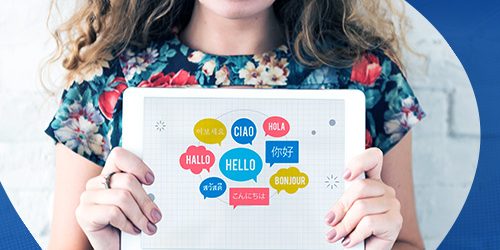EU strongly advocates multilingualism as a social tool for interaction, communication, learning and working. As many schools have adopted at least two foreign languages, learners acquire linguistic skills to learn subject content, which enables them to use both divergent and convergent thinking skills to communicate and collaborate efficiently.
Teachers, therefore, need to understand how to scaffold bilingual learners in language acquisition, motivate them to efficiently use the languages in self-discovery, and to appreciate the opportunity to learn more about different cultures.
Tests
Creative workshops
Extracurricular activities
Accommodation
Course outcomes
- Understanding the process of language acquisition
- Developing the ability to support students while they use two or more languages in their learning
- Adopting bilingual teaching strategies and integrating them in everyday classroom practice
- Preparing students to use bilingualism as a life skill
Overall objective: Raising the quality of bilingual education
The training program aims to utilise a creative approach to improve the quality of bilingual education, making it more effective and productive.
Contents
Day 1 - Introduction to EBE
- Understanding language acquisition
- Adopting the concepts of content and language integrated learning (CLIL)
- Linking theories and classroom practice
Day 2 - Great Teaching Toolkit (GTT)
- Understanding the pedagogy of bilingualism
- Recognizing the challenges in a bilingual classroom
- Reviewing teaching methods and learning activities in a CLIL context
Day 3 - Assessment for Learning vs Assessment of Learning
- Understanding formative and sumative assessment in a bilingual context
- Evaluating the impact of new learning
- Applying assessment strategies
Day 4 - Designing CLIL teaching material
- Understanding the principles of active learning in material design
- Applying CLIL framework in teaching material design
- Evaluating the impact of active learning in material design
Day 5 - The power of feedback
- Understanding the principles of good feedback
- Using feedback as a pedagogical tool
- Improving teaching and learning based on feedback
What do you get?
Upon successful completion of the selected courses, you will receive a digital certificate, and a digital badge.
Upon completing the courses, you will receive a certificate that allows you to apply your newly acquired knowledge and skills in practice, i.e. in the business world.
A digital badge is proof of a successfully completed course that qualifies you for future business opportunities.
Participants’ evaluation
“Through various forms of professional development of education professionals, ICE enables individuals to improve their educational competencies for the 21st century, whereas this specific course provides innovation implementation, interactive teaching methods, and the latest achievements in the field of modern educational technologies.”
“Attending lectures and forums organized by the Institute is a great way to generate creative ideas that can be implemented in our teaching practices, as well as an opportunity to share experiences and connect with experts of different profiles.”
“The Institute is a perfect place for teachers who want to advance. Congratulations for the work concept, excellent organization, current topics, and interactivity, and especially for the professionalism of the Institute’s staff, and the selection of topics.”




